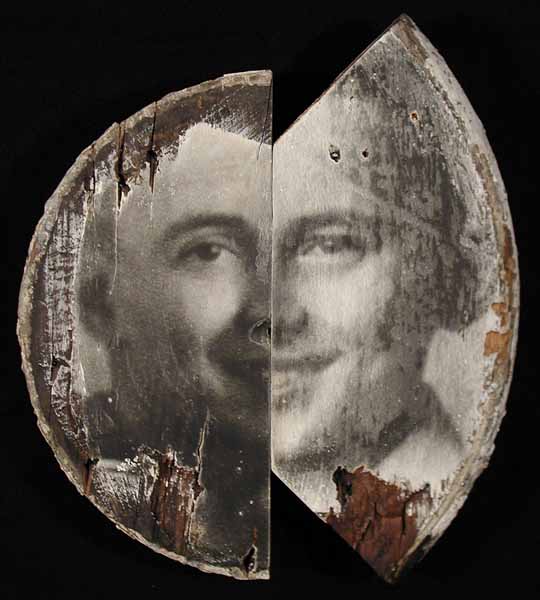
David Prifti (1961-2011) lived his life with passion and an unfaltering appetite for art and learning. A dedicated and inspirational artist and photography teacher for twenty-five years, he was famous for telling students, “Do something for your art every day!” He seemed to possess relentless creative energy and inspired widespread accounts as “vivacious and compassionate”, “an irrepressible jokester”, “a crazy boisterous guru” and “always busy, always on the move….[with] a quiet depth, a deep love for life and the people in it.”
In his life, as in his art, David relished personal connection. HE expressed this in his two distinct bodies of work – Photographic Assemblages and Tintypes. His photographic assemblages came from his desire to explore his life through the things that shaped him: relationships, memories, sense of family, rites of passage, aging and death. The process was an implicitly personal one. David’s assemblages were a means for him to research his family’s history, and through it, make connections to his own life. Through the juxtaposition of images, found objects and ephemera, he created autobiographical associations that become symbolic, conveying a sense of personal history and the passage of time.
In 2005, David’s artistic expression took a sudden, unexpected shift from assemblages to tintypes following his participation in a summer workshop on a 19th century technique known as “wet plate collodion” photography. This alternative photographic method dates back to the 1850’s. Bulky and labor-intensive, it requires a portable darkroom to be set up wherever the artist is working, with all the chemicals and materials prepared by the artist. Almost unimaginable in today’s speed-driven, digital world, David created one single exposure at a time using a view camera with 8×10 metal plates. He coated each plate with light-sensitive emulsion, then exposed and developed each before the plate dried out.
Using this technique, David created portraits that are both immediate and psychologically compelling. The images have a quality unlike any other photographic process: they are virtually grainless images which have an extremely wide range of creamy silver tones. David found himself completely drawn into the process: “What begins with an attention to the physical appearance of the subject, develops into an evolving exploration of the sitter and myself. The process is slow and labor intensive. Making these portraits requires exposure times ranging from 20 seconds to 2 minutes. It is in that collaboration that I find the power of this medium, as if the commitment required of both me and the sitter is present in the final image.” David Prifti’s work was shown by and acquired by the Museum of Modern Art in the early 1990s. He has works exhibited on Cape Cod at the Rice Polak Gallery.

